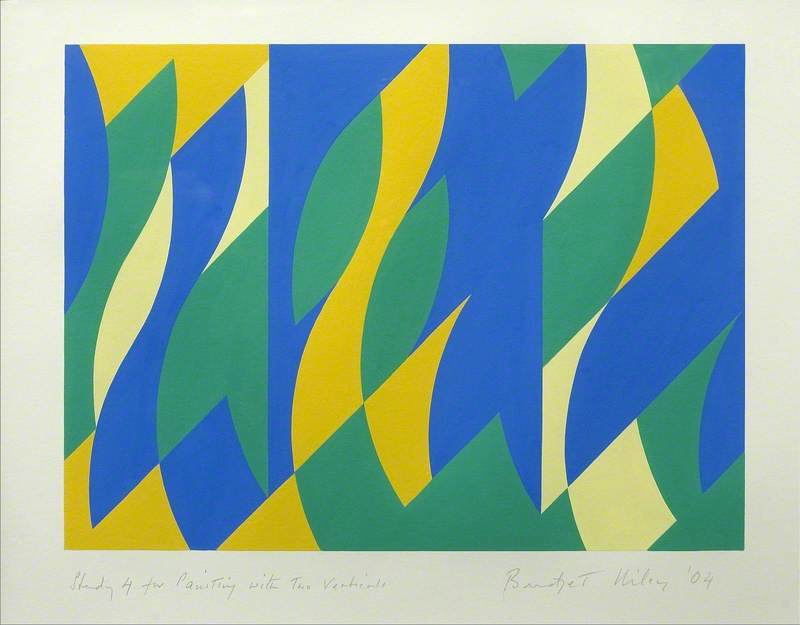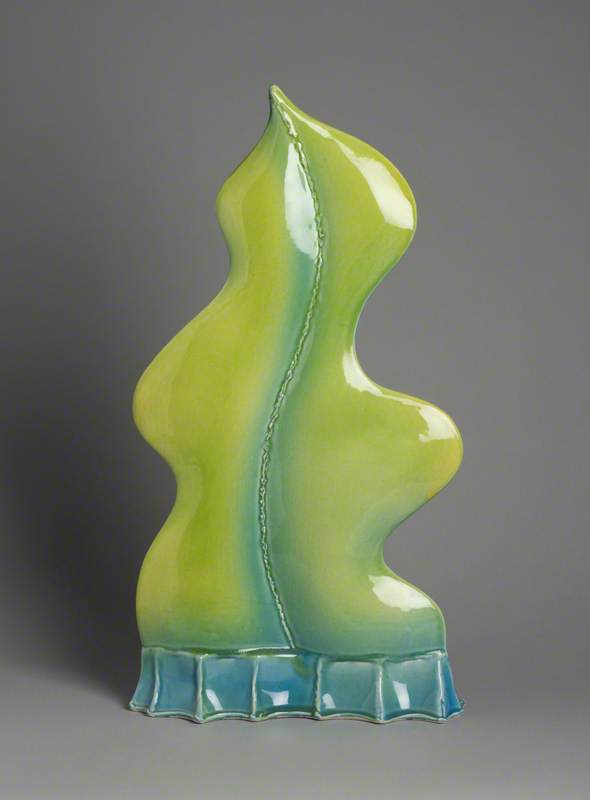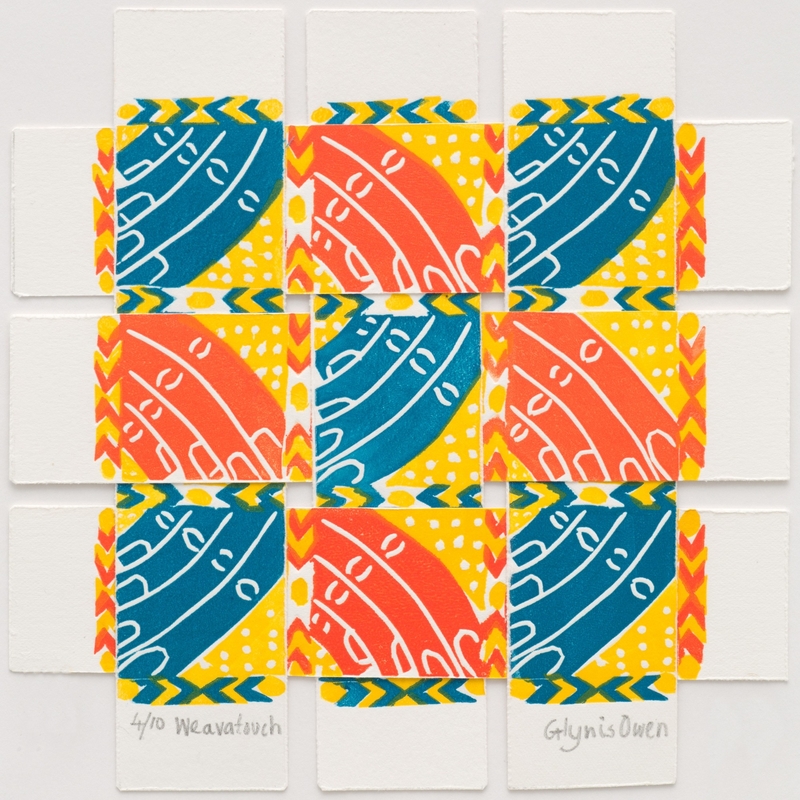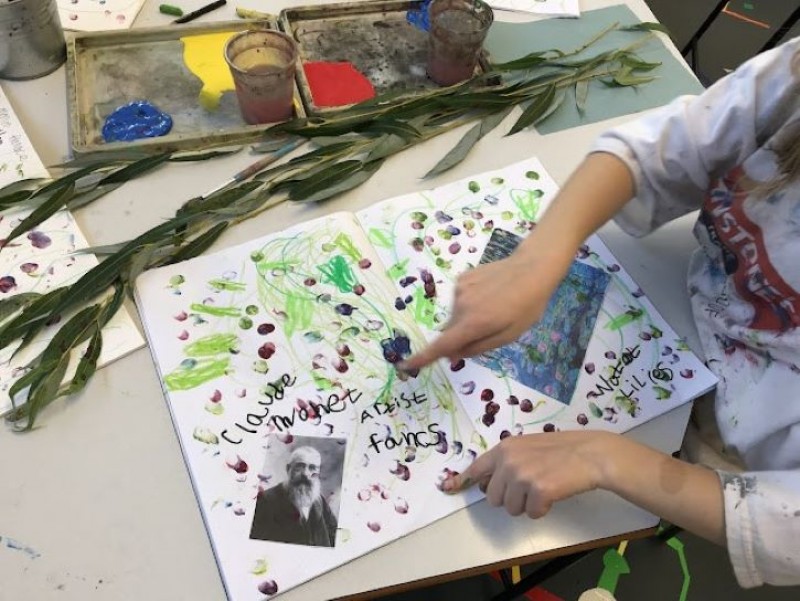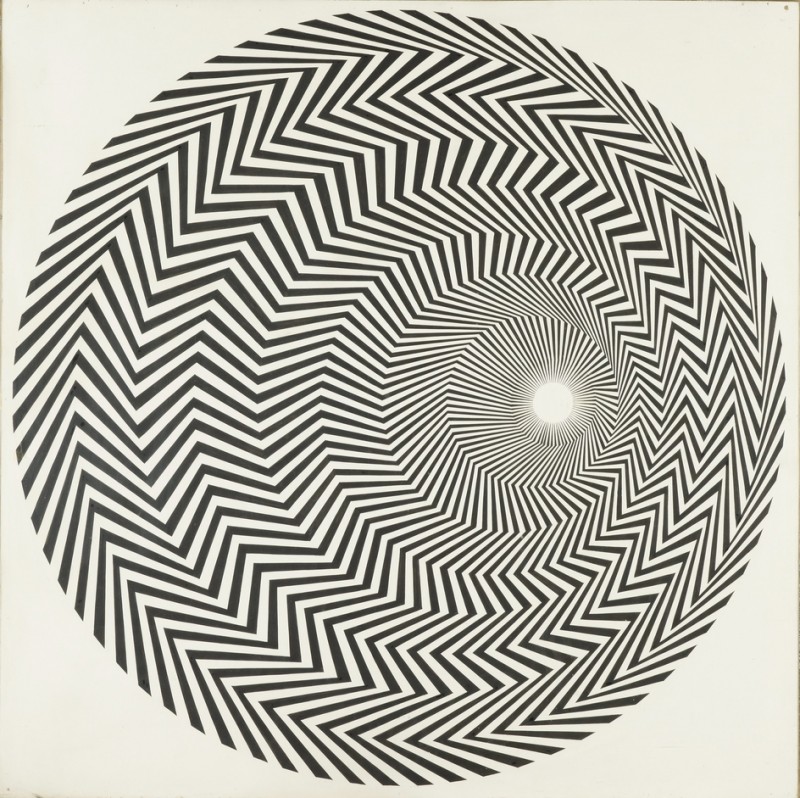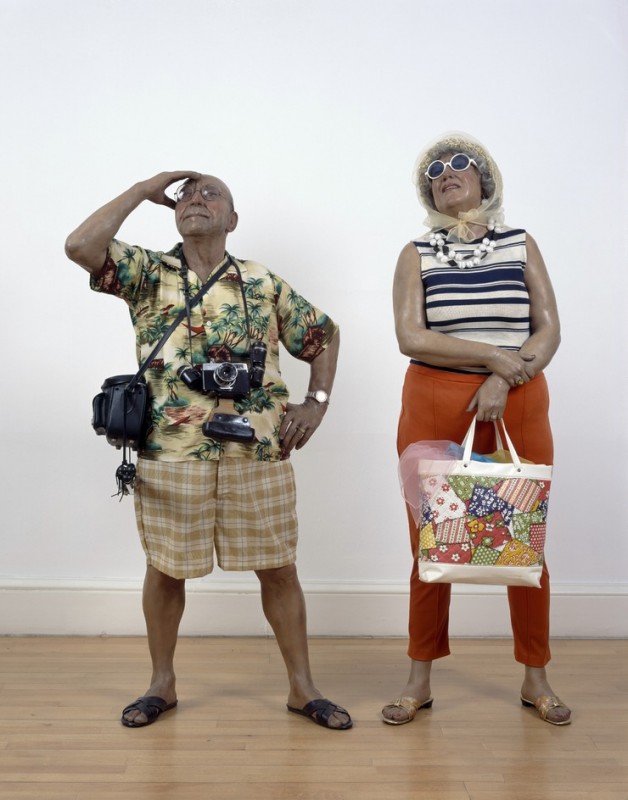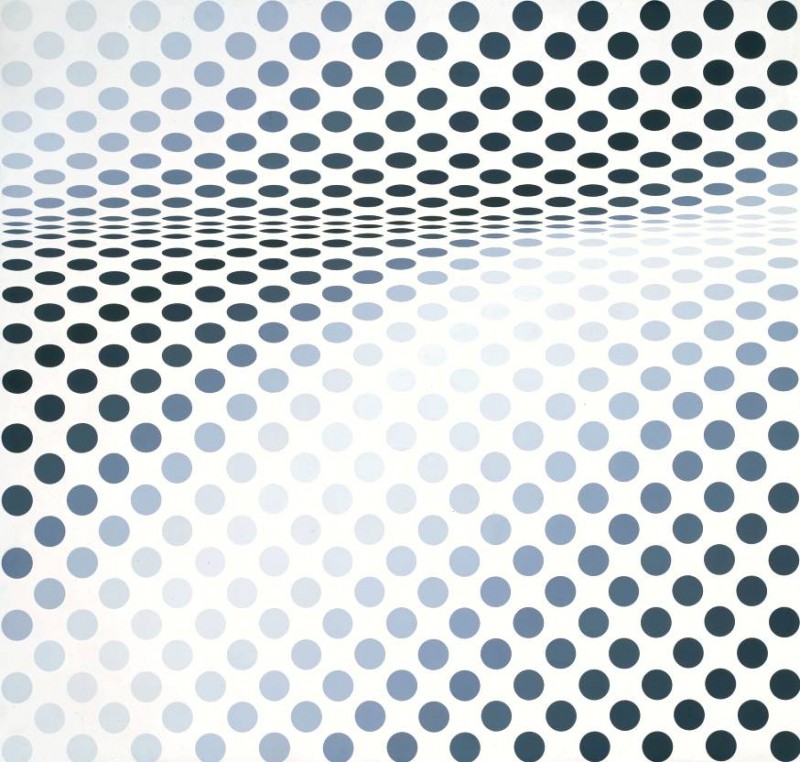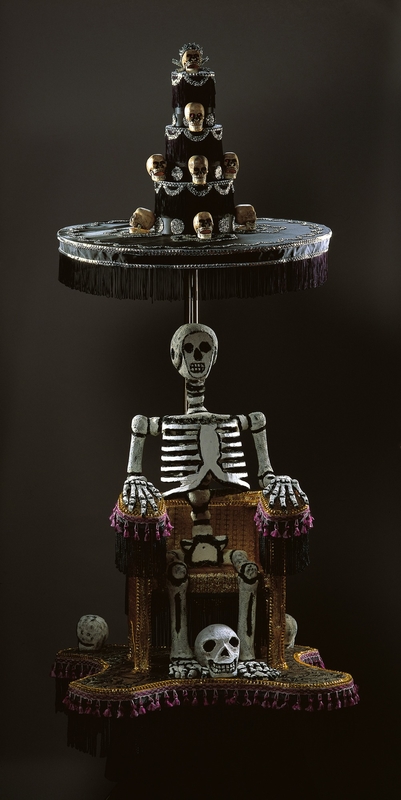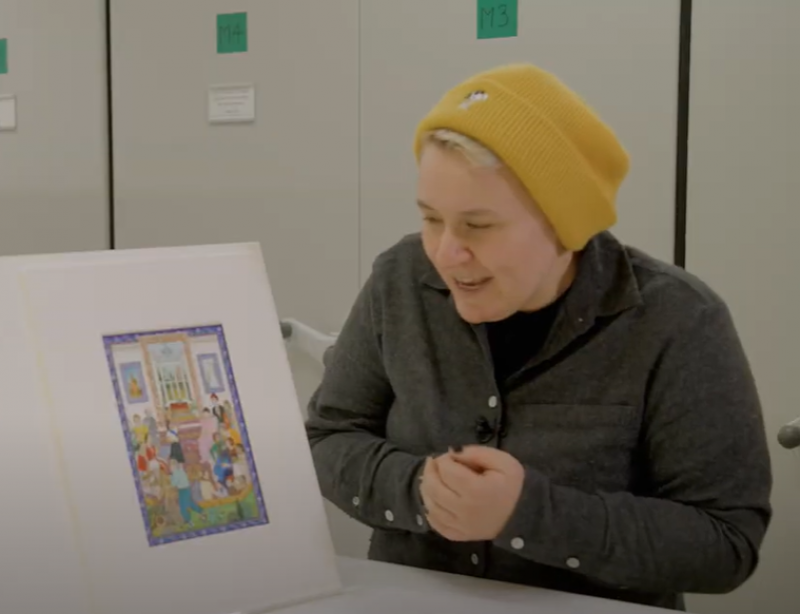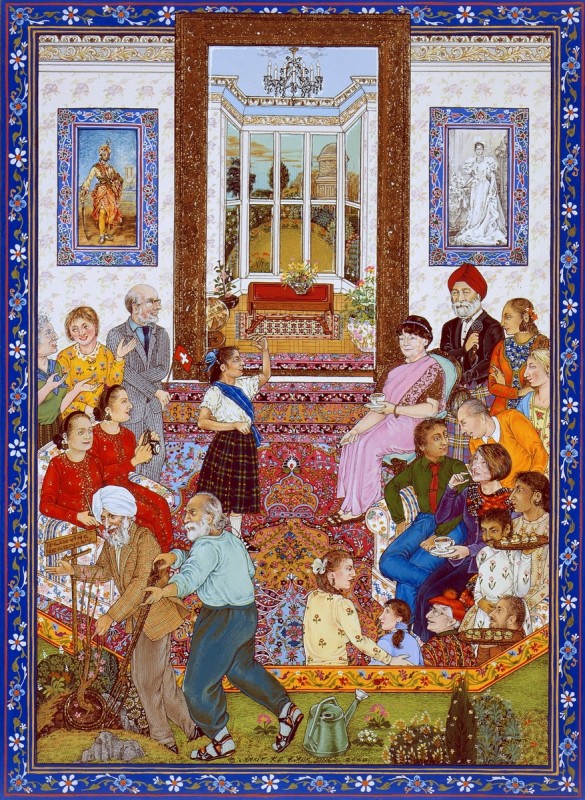Research and be inspired
Look at the painting below.
- What do the shapes and colours remind you of?
- What is the mood of the painting
- How has Bridget Riley repeated shapes to create a sense of rhythm and movement?
The artworks in this carousel also use repeated shapes to create movement and rhythm.
Select an artwork from the carousel and use the prompts below to reflect on what you like about it.
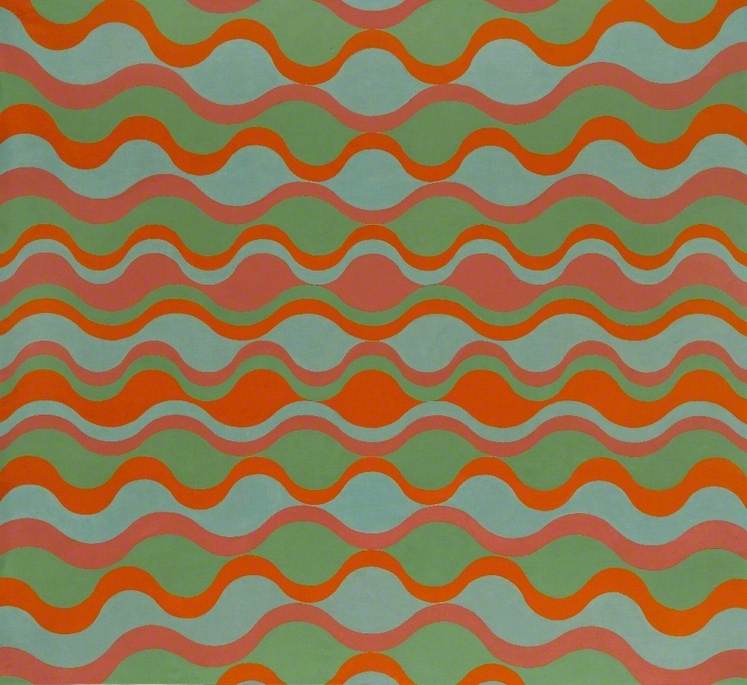
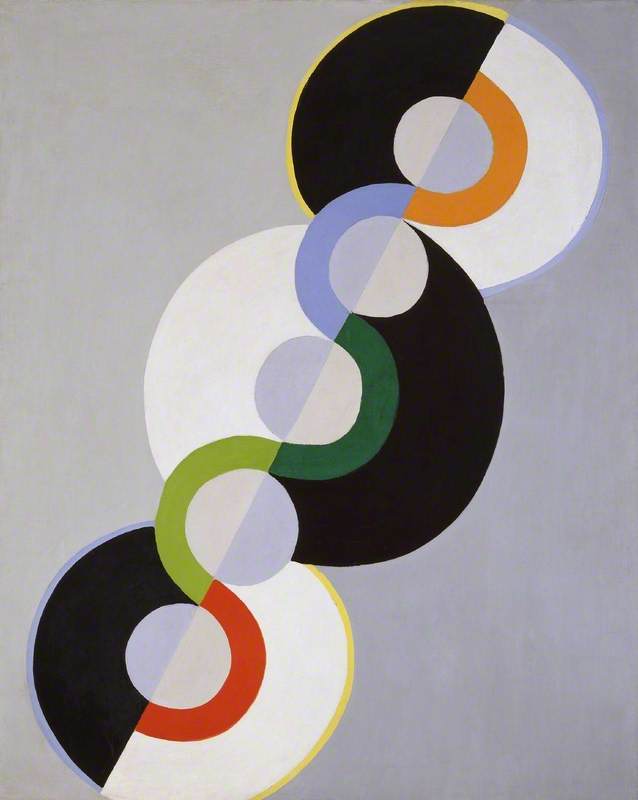




- What shapes can you see?
- Do you think the artist was inspired by things they saw around them, or have they used abstract shapes?
- How has the artist repeated the shapes to create a sense of rhythm?
- How have they used colours? Are the colours bright or subtle? Are the colours repeated?
- Is the mood of the artwork dynamic and loud, or quiet and contemplative?
Activity instructions
Design and create an abstract collage of simple, repeated shapes.
You will need:
- Coloured paper (this can be recycled or scrap paper)
- Scissors
- Glue
- A large sheet of paper for the background
Step 1: Shape ideas
Look for shapes that inspire you.
These could be shapes from nature (such as leaves, waves, or wood grain). Or other shapes around you such as buildings or structures, characters from games – or even the shape of your favourite shoes!
You might decide to use abstract organic or geometric shapes.
Step 2: Draw and cut out your shapes
- Draw your shapes onto coloured paper. Think about the mood you want for your collage. What colours might help to create this mood? (You may need to simplify your shapes by getting rid of fiddly edges.)
- If you are using geometric shapes, find objects you could use as templates, such as bottle tops or coins – or make card templates to draw around.
- Consider combining two or three different shapes and colours.
- Cut out 10 or more of each shape.
Top tips!
If you fold paper into a concertina and draw your shape on the top section, you can cut out lots of the same shape at once.
A concertina of paper and cut-out shapes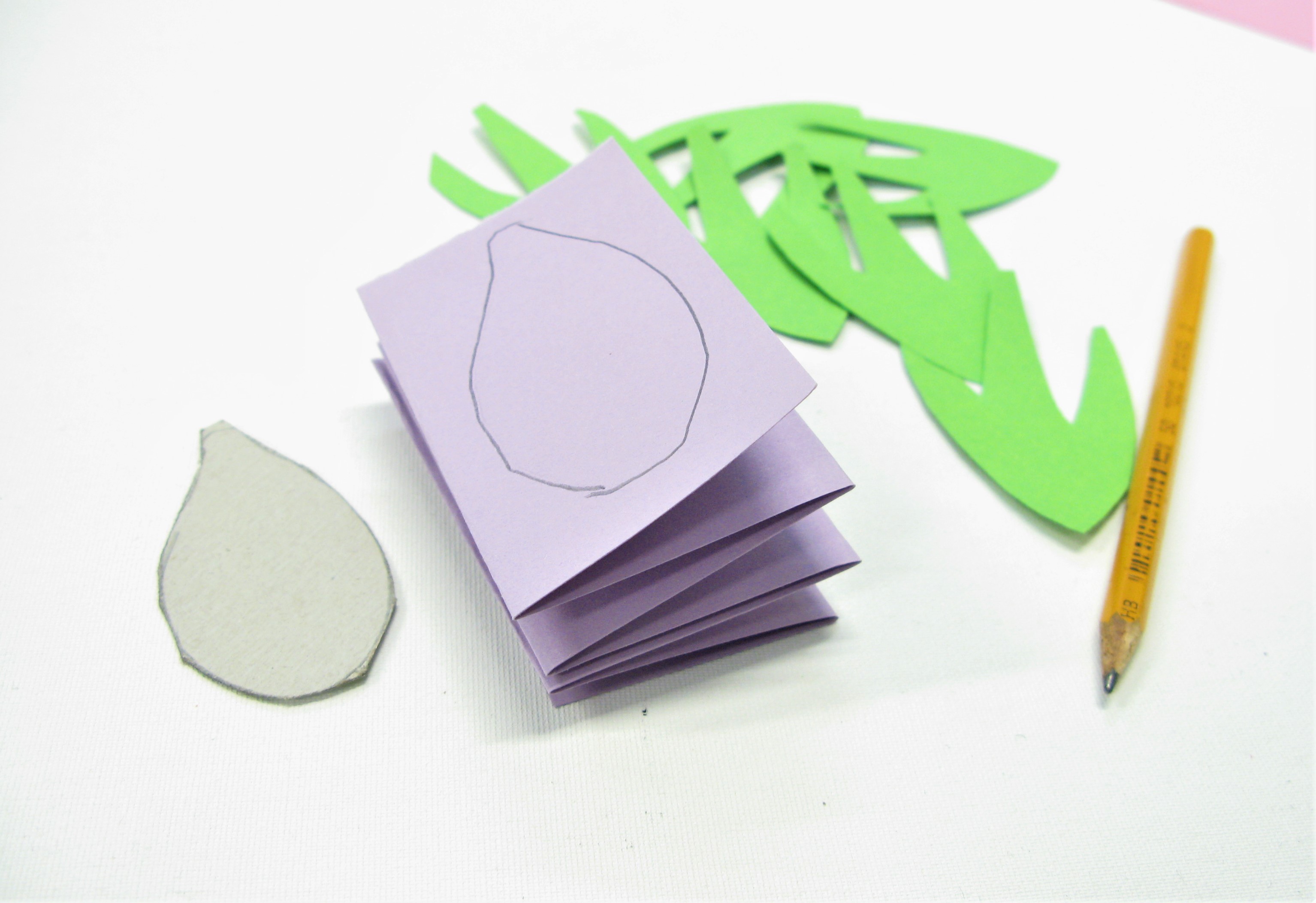
Step 3: Arrange the shapes to create a rhythm
Place your shapes onto your large sheet of paper. Experiment with different arrangements.
Do you want a dynamic and fast-paced rhythm or a slower, gentler one? How could you arrange your shapes to create the rhythm or mood that you want?
- Place the shapes close together, then try leaving lots of space around each shape … how does this change the rhythm of your collage?
- Bridget Riley used a grid to organise her shapes. Before you arrange your shapes, draw a simple grid onto your paper background with horizontal and vertical (or diagonal) lines. Place your shapes on the paper so they follow this grid pattern. You could place two or three shapes in each square or unit or alternate the number of shapes you use in each unit.
- Or you might choose to improvise without a plan! (Listen to music while you create and see how this affects your shape arrangement!)
Once you are happy with your collage, stick your shapes onto the paper and make a simple paper or card frame to show your artwork off.
Watch and be inspired!
This short video shows students creating a collage from coloured paper. If you're stuck for ideas, it might help get you started...
Development idea
- Create a lino or silkscreen print inspired by your collage.
- Or use it as the starting point for a textile design project.
